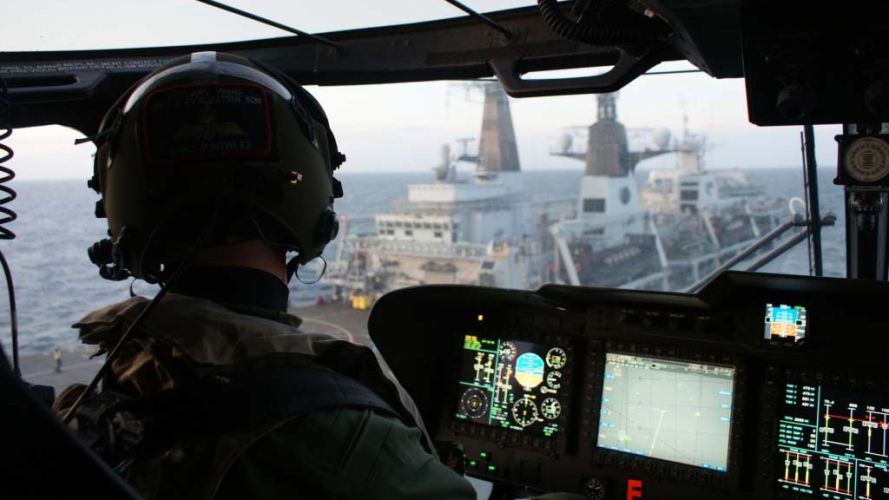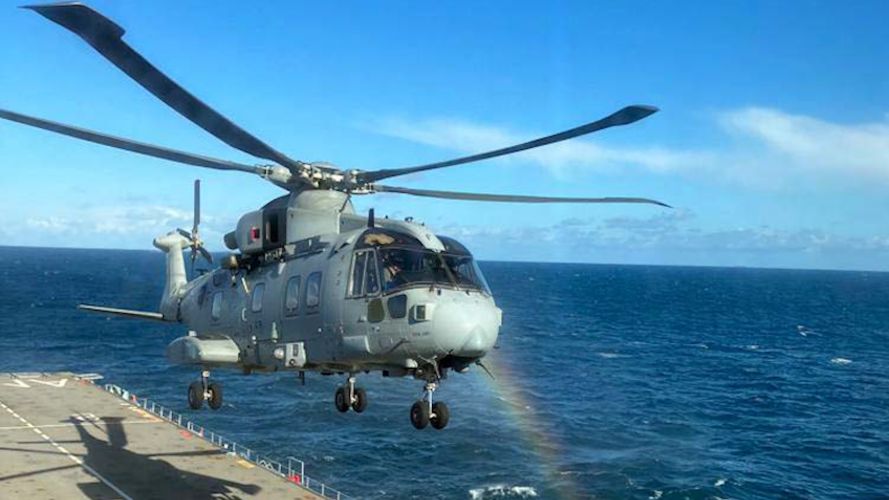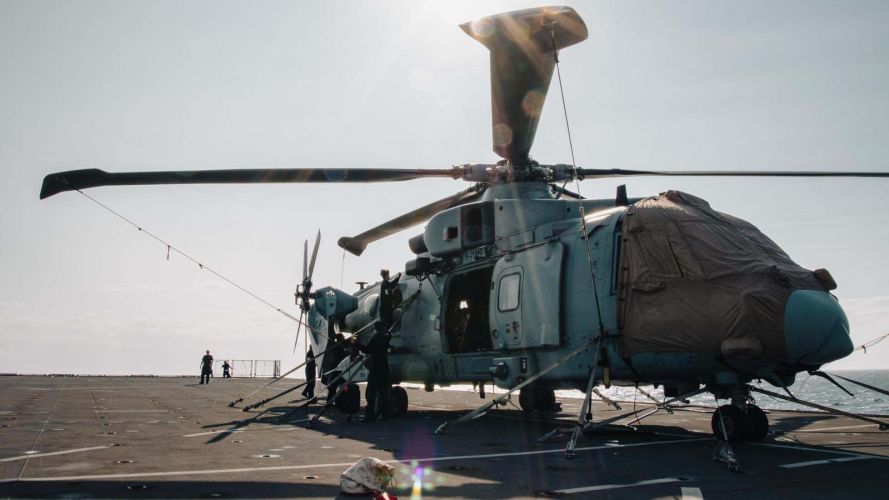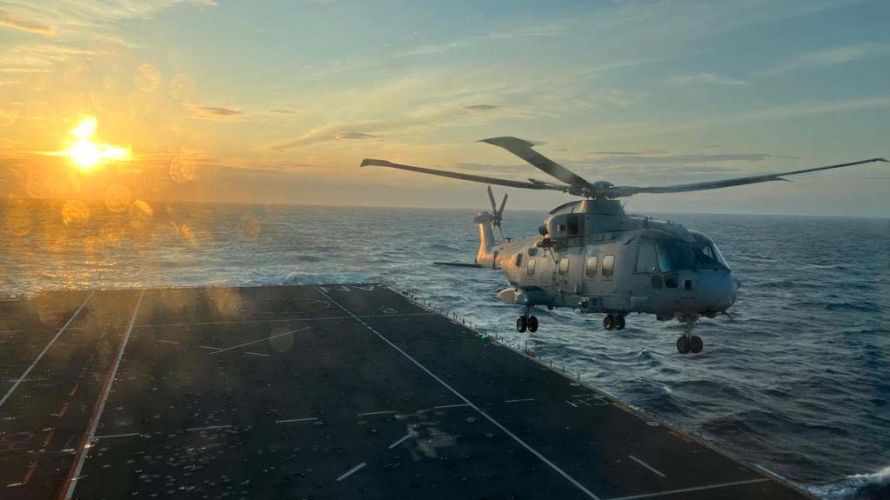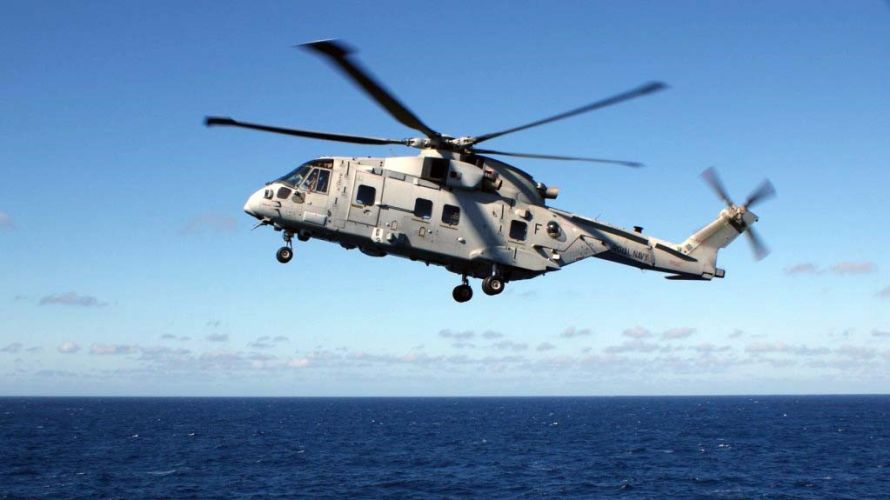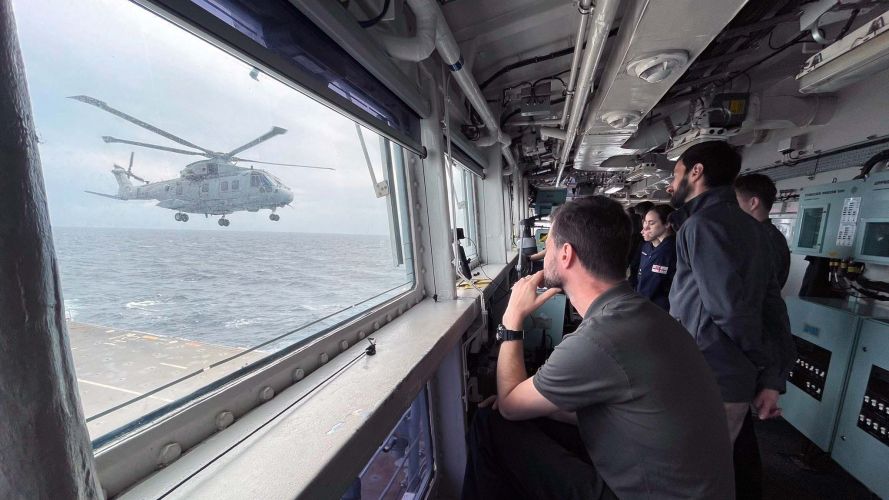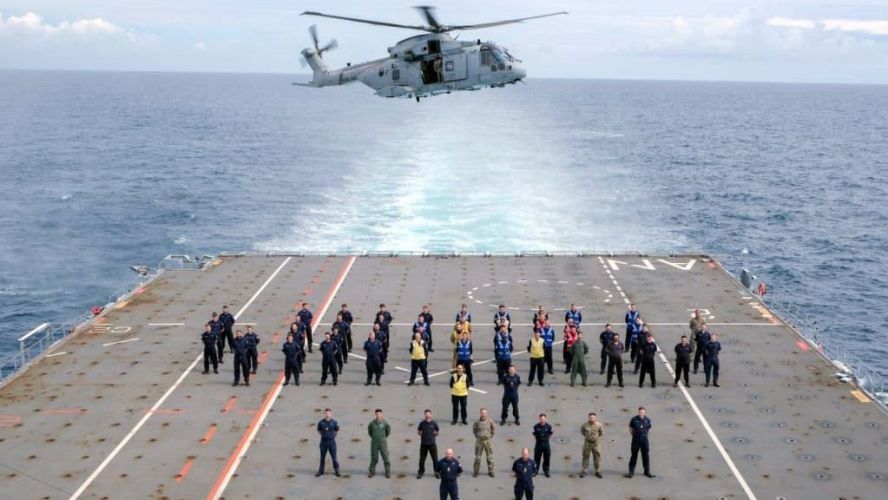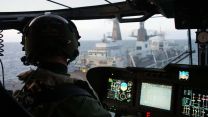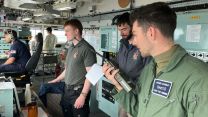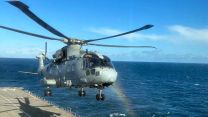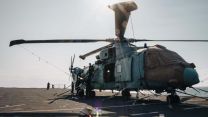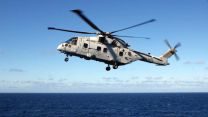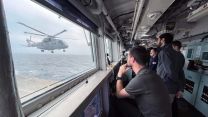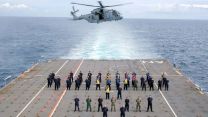Royal Navy Merlins can carry more commandos into action after extensive trials
Royal Navy Merlins can now fly further or carry more commandos into action after undergoing trials that pushed the helicopters to the limit.
Over the past few weeks, extensive trials with commando assault ship HMS Albion around the UK mean Merlins could carry up to a dozen extra troops or, with extra fuel aboard, fly for another two hours – meaning they are capable of operating much deeper into hostile territory, if necessary.
According to the Royal Navy, "the Merlin has been the 'battlewagon' of the Commando Helicopter Force since 2016, ferrying up to two dozen Royal Marines from ship to shore and around the battlefield, wherever the green berets deploy around the world".
The helicopters also carry supplies, ammunition, guns, and even vehicles if needed.
A Ship Helicopter Operating Limits (SHOL), has been in place "for nearly a decade", it is the "handbook" for safe Merlin operations – such as weight limits, wind speeds, humidity, and weather conditions.
It has largely been based on data gathered using the helicopter's predecessor, the respected Sea King which was older, smaller and lighter.
According to the Royal Navy, a decision was taken to squeeze as much as possible out of the Merlin Mk4, with the Royal Marines now transitioning to new Littoral Response Groups – operating in northern Europe and the Middle East region – with an increased focus on raiding operations.
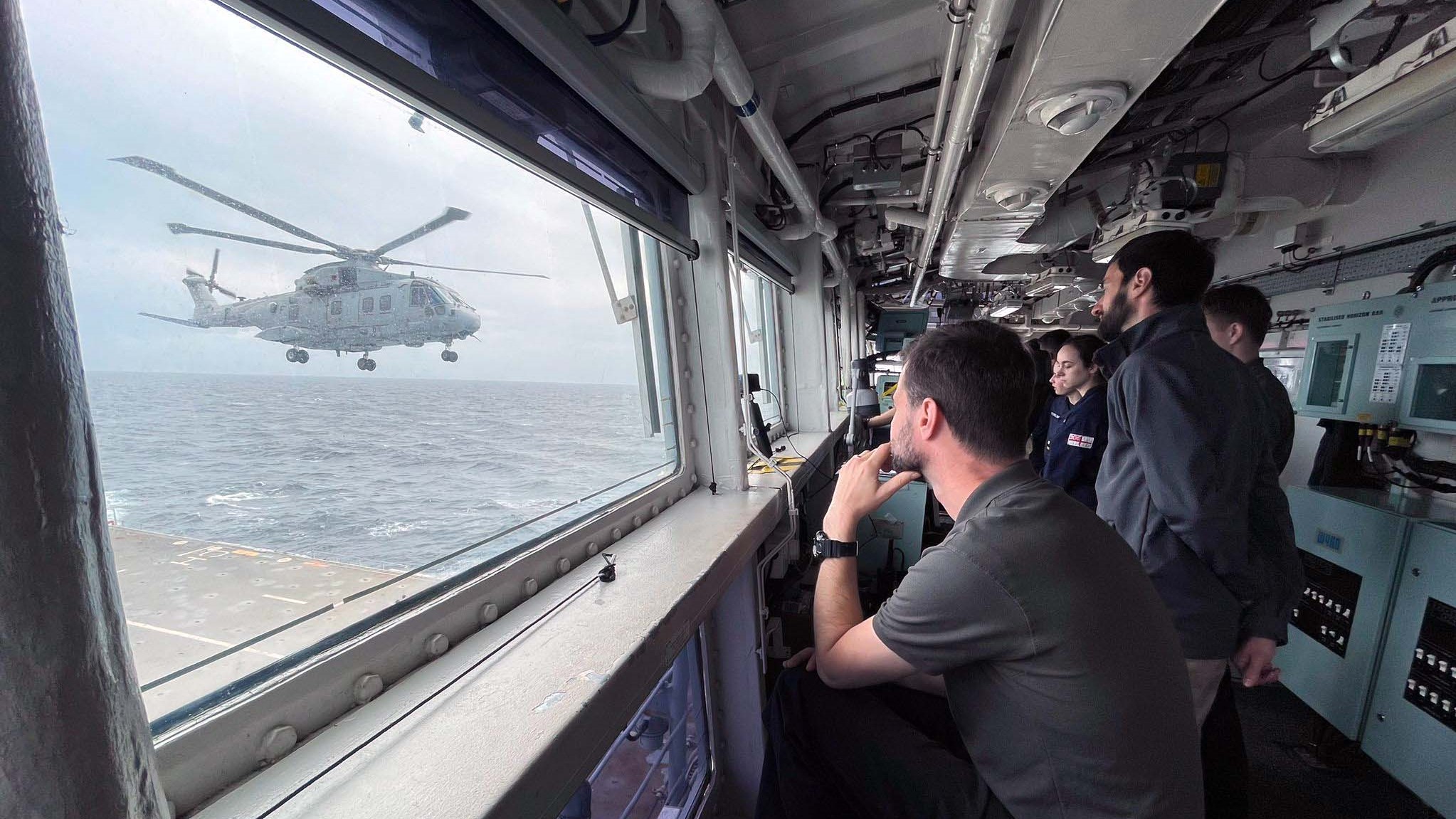
Tests drew upon expertise in the Ministry of Defence's (MOD) Defence Equipment and Supplies organisation, science/tech firm QinetiQ, the Air and Space Warfare Centre Rotary Wing Test and Evaluation Squadron (RWTES), 846 Naval Air Squadron and were arranged on HMS Albion as she returned from her spring deployment to the Baltic.
This resulted in taking the Merlin into unexplored areas of the flight envelope and resulted in a series of aviation firsts, according to the Senior Service.
"Both the ship and the aircraft were fitted with bespoke instrumentation, allowing flight test engineers to see in real-time the aircraft's performance and handling characteristics", said the Royal Navy
"The Merlin was also fitted with ballast which was incrementally increased to artificially increase the aircraft’s operating weight."
The Navy continued: "After ten days of testing, 350 deck landings were achieved including into wind landings 'heavy' across a range of headings relative to the ship's position and aft facing landings, offering a 360-degree SHOL clearance.
"And running landings – rolling to a stop on the deck rather than dropping down vertically – will provide a very effective profile for heavy, limited-power recoveries in low winds and taxi and castor data will allow the helicopter to reposition safely on deck upon landing."
Lieutenant Commander Tom Lofthouse, the detachment commander for the trials – and also the last person to land on HMS Albion's deck in a Commando Sea King - hailed the trials as "a game-changer for amphibious operations in constrained waters such as the Norwegian Fjords."
He added: "We are delighted to be able to increase the capability of the Commando Helicopter Force and to support the growth of Littoral Readiness Groups by enabling more Royal Marines to fly further.
"The trial was the culmination of years of planning and preparation. Bringing lots of teams together to achieve success.
"From instrumentation to aircraft to ship to analysis, each has to be spot on to safely define the edges of the handling and performance envelope for each condition.
"Its success is down to the incredible individuals involved across a large number of teams."
